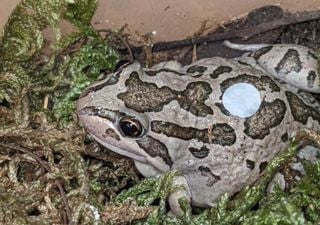Unraveling the Genetic Mystery of Sunflower Sun-Tracking: It's Not as Simple as Scientists Once Believed
Sunflowers' sun-tracking abilities, long thought to be phototropism, are a complex interplay of light pathways, as revealed in a new study challenging conventional understanding and shedding light on plant behaviors.

Sunflowers have long been known for their remarkable ability to follow the sun's path across the sky. This phenomenon, known as heliotropism, has captivated the imaginations of both scientists and nature enthusiasts alike. While it was widely assumed that sunflowers' sun-tracking was a form of phototropism, recent research has unveiled an unexpected twist in the story.
The Science of Sunflower Sun-Tracking
Sunflowers track the sun by growing slightly more on the east side of their stems during the day, causing their heads to face west, and more on the west side at night, causing their heads to reorient eastward.
The mechanism behind this behavior was long believed to be governed by phototropin, a light-sensitive molecule that responds to blue light. However, a new study conducted by plant biologists at the University of California, Davis, challenges this conventional wisdom.
Unraveling the Genetic Mystery
The research team, led by Professor Stacey Harmer, explored the genetic underpinnings of sunflower heliotropism. They compared gene expression patterns in sunflowers grown indoors under controlled laboratory conditions with those grown outdoors in natural sunlight. The results were astonishing.
Science Fact :
— noobelectrical (@noobelectrical) October 7, 2023
Sunflowers are like nature's compass.They actually follow the Sun's path across the sky, a phenomenon known as heliotropism.
This heliotropism is achieved through differential growth of cells on the stem's shaded side, allowing precise tracking of solar position. pic.twitter.com/2UzWR5B6Js
In the laboratory setting, where sunflowers grew straight toward the light, genes associated with phototropin were activated. However, sunflowers in their natural environment, displaying their characteristic sun tracking, exhibited a completely different gene expression pattern.
Surprisingly, there was no observable difference in phototropin gene expression between the east and west sides of the stems.
A Multifaceted Approach to Sunflower Heliotropism
The study further examined the role of different wavelengths of light, including blue, ultraviolet, red, and far-red light, by blocking them with shade boxes. Interestingly, none of these light wavelengths had a significant impact on sunflower heliotropism. This suggests that multiple light pathways are likely at play in achieving the same sun-tracking goal.
This behavior coincided with a burst of gene expression on the shaded side of the plant, although this response did not repeat in the following days. This phenomenon suggests that some form of "rewiring" takes place as sunflowers adapt to their changing environment.
Implications Beyond Sunflowers
The discovery of these unexpected genetic pathways in sunflowers has broader implications. It emphasizes the complexity of translating laboratory findings to real-world scenarios, highlighting the limitations of controlled environments.
This research opens the door to new avenues of investigation, shedding light on the inner workings of plants and the diverse mechanisms by which they perceive and respond to light.








